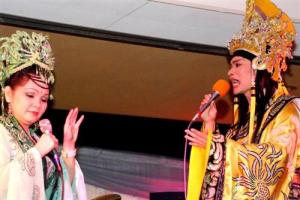Cai Luong - a Traditional Vietnamese Musical Performance Art

Characterized by a mix of a mix of Tuồng, southern Vietnamese folk music, Asian popular theatre and French comedy, Cải Lương is most often categorized as “reformed theater” or “renovated theater”. Its origin dates back from the 20th century in Vietnam’s Southern regions, where among its first performances took place in village squares. During the country’s French colonial period in the 1930’s, Cải Lương blossomed as a middle-class form of theater and become popular all over Vietnam, though its heartland remains in the south.
There are mainly two types of Cải Lương , Cải Lương Tuồng Cổ (the ancient form) and the Cải Lương Xã Hội (more modern in characteristics), both highlighting the moral values of the Vietnamese. Though the plots involved in Cải Lương Xã Hội performances deal with romance, domestic relationships centering on the cultural and social norms of the country, its stories generally feature the modern Vietnamese society. Because of its nature, Cải Lương Tuồng Cổ co performers are donned in old-fashioned costumes while its plots surround on legendary and historic tales of the feudal system.
Regardless the type of Cải Lương , it exhibits familiar aspects of which performers use a combination of spoken dialogue and nostalgic singing accompanied by background music in order to convey their thoughts and emotions and carry out their message to the audience. Its continuing absorption of contemporary themes and influences, along with the adoption of modern musical instrument allows the art to be constantly reinvented and reintroduced to the people in fresher themes, thus, causing the general public’s undying interest for the art. Even up to present, Cải Lương remains popular and is highly appreciated by Vietnamese locals and foreign visitors alike.









